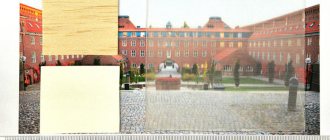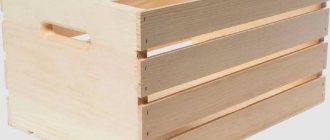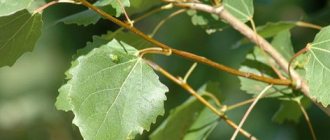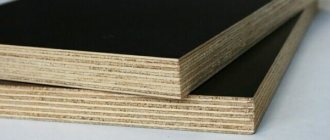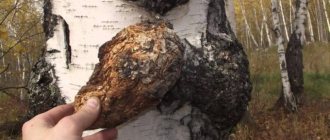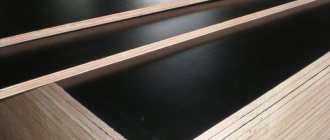Description of appearance
Photo: Pixabay
The tree reaches a height of 25–45 meters and has a cone-shaped or rounded crown. The diameter of the trunk decreases towards the top. The largest trees can have a diameter of up to one meter.
In the first years of life, pine grows quite quickly. Pollination occurs in May - June, there is always a lot of pollen. Fertilized female spikelets quickly turn into green cones, then they turn brown.
The bark of young branches has greyish-white bark. Old branches, like the upper part of the pine trunk, are covered with peeling yellow-red bark.
Only in mature trees the lower part of the trunk is covered with thick, dark, furrowed bark.
Pine has a unique root system, which differs depending on where the tree grows.
- Pine growing in dry places has a well-developed, deep taproot.
- In trees growing near groundwater, on the contrary, the root system is formed by lateral roots. They grow in all directions.
Pine foliage is hard needles, from 2 to 6 cm long. The needles are pointed, located on the shoots in pairs. Paired needles encircle the branches in a spiral. The needles live on the branch for 2 to 3 years.
Pine is a long-living tree. Its life cycle is from 300 to 350 years, but brothers-in-law are known to be over 500 years old.
Advantages and disadvantages:
Pine has its advantages and disadvantages.
Let's start with the pros:
- Pine wood is quite dense and durable, but inferior to valuable trees (oak, ash),
- Resistant to warping
- Suitable for all types of processing
- It has a favorable price,
- Easy to paint
- Has a beautiful texture
- Does not accumulate or emit harmful substances. Absolutely environmentally friendly material. Can be used to make products for children.
- Resistance against fungi is indicated as moderate to negligible. That is, direct contact with the ground and moisture is undesirable, or this type of application is possible, but with additional processing of the wood. In other cases, the material is resistant to rotting, which can be considered a plus.
- Many people highly value the aroma of products made from natural pine and even recognize its healing properties.
This is where the list of advantages probably ends.
Flaws:
- Pine is easily damaged; mechanical stress leaves scratches and chips on it. Of course, restoration is possible, but this will require certain costs. Interestingly, the older the tree from which the wood was made, the stronger it was.
- Often furniture and other products made from pine have a slightly yellowish tint; in some cases, over time, pine acquires a reddish tint, which not everyone likes. Also, pine may darken unevenly. All this can be corrected by tinting and painting.
- Another disadvantage of pine is that products made from it, especially furniture, are often made quite thick and strong, due to the properties of the wood and the need to withstand the load. Therefore, “pine” furniture turns out to be more bulky and heavier than products made from other types of wood.
- This material is also very resinous, so when working with it and on the final product, it can sometimes release resin, which can cause some trouble.
Medicinal properties of pine
Photo: Yandex.Pictures
Pine is ruled by Jupiter and is healing for people born under the signs of Pisces and Sagittarius.
The most accessible pine plants for medicinal purposes are buds and needles. The medicinal raw materials that pine produces were used for treatment back in Ancient Egypt, Greece and Rome.
Avicenna argued: the smoke from burning pine prevents lacrimation, fills ulcers in the eyes and strengthens vision.
Overview of softwood varieties and their main features
Coniferous trees come in various types. Each of them is assigned separate characteristics. Softwoods include the plant species listed below in this section.
Pine
This breed is considered one of the most popular materials used in construction. This is due to the fact that a living tree has an almost perfectly straight trunk, which can reach a height of 30 meters. Such parameters facilitate its processing in preparation for the production of lumber.
Lumber prepared from pine varieties Source listvennicaonline.ru
This breed is considered moderately light and is classified as a sound breed. The structure of the wood is soft, which is provided in sufficient quantities with resin passages. Non-plasticity and moderate mechanical strength can also be noted. When processing these raw materials, fewer defects and waste are generated. The wood is resistant to decay and has good adhesion to the same material. They try to use this breed in construction, furniture and commodity production and other areas.
Medicinal properties of pine needles
Pine needles are rich in vitamin C, tannins, bitters, flavonoids, essential oil, coumarin, manganese salts, iron, copper, boron and zinc. It also contains provitamin A, vitamins K and E.
Preparations are obtained from pine needles that stimulate the healing of purulent wounds. An infusion of pine needles is an effective means of preventing vitamin deficiencies and scurvy.
Coniferous pine extract is used for baths and is useful in the treatment of nervous and cardiovascular diseases.
Coniferous tree trunk structure
All the necessary characteristics that are taken into account when choosing a forest for specific purposes depend strictly on the structure of the trunk. It consists of:
- kernels (central inner part);
- sapwood (the peripheral layer found between the underlying outer and inner bark).
There are also differences in the core. For example, there are trunks that are completely the same shade inside, and there are those that have dark areas. Depending on this, coniferous species are also divided into:
- sound - this can be pine, yew, larch, cypress, juniper or cedar;
- mature wood (spruce and fir).
Coniferous wood contains its own cells. These can be parenchyma and tracheids. The first components are designed to collect useful nutrients, on which the growth of the tree depends. These cells are located in the medullary rays and are also found in the resin ducts.
View of a cut coniferous wood trunk Source kelohouse.ru
Medicinal properties of pine buds
Pine buds are young shoots in the initial stage of growth. At the tops of branches they are located singly or in several whorls.
The kidneys contain vitamin C, resins, essential oils, bitter and tannins, mineral salts, starch, carotene.
Due to the complex composition of biologically active substances contained in the kidneys, they have expectorant, diuretic and disinfectant properties.
Most often, a decoction of kidneys is used for treatment. It is effective for treating lung diseases and bronchitis. The decoction is taken as an expectorant, diuretic and disinfectant.
You can use pine infusion or kidney decoction for inhalation for inflammatory processes in the upper respiratory tract. Pine buds are an integral part of the chest collection, and their infusion can be used for medicinal baths.
Pine buds should not be taken for glomerulonephritis, hepatitis and pregnancy.
Where does pine grow
In Russia it grows throughout the forest zone, in many steppe regions, where it occupies highlands, grows on outcrops of limestone and chalk, and covers sandy massifs and river valleys. Forms pure forests of various types in a variety of habitats - from very poor sands, chalk outcrops to raised bogs. The evergreen tree is highly valued and grown as an ornamental plant.
Collection of pine buds - winter or early spring during swelling and divergence of the upper scales. When the pine buds are pink-brown on the outside, they are greenish-brown on the inside. The smell of pine buds is resinous, very aromatic, the taste is bitter.
Cut with pruning shears leaving 5cm of stem remaining. Dry in a shed, in a room with good ventilation. Do not use dryers as the resin is heated and evaporates. Store for up to two years.
Pine needles can be collected all year round, but it is better during the winter period, when the greatest amount of vitamins accumulates in it.
Interesting Facts
Photo: Yandex.Pictures
Chlorophyllocarotene paste, which is made from pine needles, is often used to treat burns and skin diseases.
Pine pollen helps treat rheumatism and gout, as well as after a serious illness.
- Dusty male pine spikelets need to be dried in the sun and the pollen shaken out. For treatment, pollen should be brewed as tea or taken with honey.
Tar is obtained from pine wood by dry distillation.
- Tar is used in the form of 10–30% ointment to treat eczema, scaly lichen, and scabies. Pine tar is part of sulfur-tar soap and Vishnevsky ointment.
Taking baths with pine needle extract helps with painful irritability and strengthens the nerves.
- Baths help with nervous insomnia, agitation, paralysis, gout, articular rheumatism, obesity, asthma, and respiratory diseases.
During a flu epidemic, air disinfection with pine resin helps. If you burn small pieces of pine resin in the house several times a day, the house will have a persistent, pleasant, resinous aroma.
Application
Pine wood is characterized by high strength, distinct texture, different colors and resistance to possible rotting processes. Trees growing in light, sandy areas at high altitudes are especially valued. Their trunks are smooth, with a small number of knots, and the sapwood is small in size, that is, that part of the tree that is subject to greater decomposition.
Properly dried pine wood can be easily carpentered. Pine blanks can be glued together, they hold nails and screws perfectly, and they can be painted and varnished. The scope of application of pine resin also depends on its variety.
The first grade includes trees with a minimum content of resinous substances, the second with the maximum. Excessively resinous trees were and are still used in the maritime industry; such products can lie in water for years without their physical characteristics changing. Therefore, the practicality of using pine wood in some industries is rated a solid five points.
Traditional medicine recipes
- In folk medicine, a decoction of pine buds is used for dropsy, rheumatism, and also as a choleretic agent.
- For pain in the lower back and joints, radiculitis, sciatica, traditional medicine recommends applying fresh steamed pine sawdust, wrapped in gauze, to the lower back.
- Baths with pine extract are indicated for restoring strength after a serious illness. Bath duration is from 10 to 12 minutes. You can take baths every day or every other day.
Decoction of pine buds
Photo: Yandex.Pictures
Pour two tablespoons of pine buds with a glass of water and heat in a water bath for half an hour. Cool and strain. Take 1/4 cup three times a day after meals.
Prepare a decoction for inhalation in a ratio of 1/10.
A decoction of buds and young needles for the treatment of bronchitis
Take 5 grams of a mixture of buds and young needles. Pour a glass of hot boiled water.
Place on the stove and cook over low heat for 20 minutes. Cool and strain. Take one tablespoon of the decoction 3 times a day.
Syrup for the treatment of bronchitis
Take 50 grams of a mixture of buds and young pine needles. Pour a glass of boiling water into a thermos. Leave for two hours, strain.
Add 350–500 grams of sugar, put on fire and cook until thickened. Take one dessert spoon of syrup 3 times a day.
Pine buds for the treatment of bronchitis
Pour one tablespoon of pine buds into a thermos in the evening. Pour 1/2 liter of boiling water and let it brew overnight.
The next day, drink a warm infusion 20 minutes before each meal. You need to drink the entire infusion in several doses.
Infusion for cough treatment
Pour one tablespoon of pine buds into a glass of boiling water. Leave for 40 minutes. Strain. Drink 2-3 sips directly when coughing.
Extract from pine needles and cones
Baths with extracts of pine needles and cones are useful for the treatment of nervous and cardiovascular diseases. To prepare the extract you need pine needles, twigs and cones.
Pour the raw material with cold water and boil for half an hour. Then wrap the broth and let it brew for 12 hours. A good extract is brown in color.
- For a full bath it requires 1.5 kg of raw materials.
- For a half bath - 3/4 kg of raw materials.
- For sitz and foot baths – 1/4 kg of raw materials.
Properties of softwood
For each type of wood, including coniferous, there are separate standards and characteristics. The area of application of lumber depends on them. It is important to highlight several characteristics that pay close attention to when purchasing timber for various needs.
Resinous trunks of coniferous trees Source drevologia.ru
Strength
It is known that any tree experiences various types of loads, including rain, wind and others. Accordingly, this is taken into account when preparing lumber. In the table below we indicate all the possible strength characteristics of coniferous wood, which will help determine whether the selected wood option is suitable for a particular task.
| Wood name | Rot resistance | Hardness degree | Pl min | Pl max |
| Spruce | 4 (low) | 660 | 400 | 500 |
| Larch | 3-4 (moderate to low) | 1200 | 950 | 1020 |
| Douglasia | 3-4 (moderate or low) | 510-710 | 350 | 770 |
| Yew | 2 (high) | 1200 | 640 | 800 |
| Pine | 3-4 (moderate or low) | 380-1240 | 400 | 500 |
| Fir | 4 (low) | 350-500 | 350 | 450 |
As for the hardness and wear resistance of the material, the structure of coniferous wood directly affects the resistance during machining, as well as during penetration of fasteners.
Coniferous tree trunks prepared for processing into lumber Source par-torg.com
Humidity indicators
Humidity is classified into two types:
- relative is the one that is expressed as the ratio of moisture to the weight of wood in a not yet dried state;
- absolute - this humidity shows the amount of water in the total mass of a particular wood mass.
Properties such as decorativeness and wear resistance are defined in different ways. The first is visual, the second is experimental, respectively.
Cut of damp softwood with visible dampness in the fibers Source kelohouse.ru
Procurement of raw materials
Pine buds should be collected during the swelling period. Collection should be made from the side shoots of young growth. Harvesting should be done in logging areas.
The buds must be cut with a knife or scissors along with last year's shoot up to 3 mm long. You need to dry the buds in a dry, ventilated area or in the open air.
The finished raw material is aromatic and has a bitter aftertaste. It is recommended to use tightly sealed glass jars for storage. In such containers, raw materials can be stored for up to a year.
Types of pine in construction
The most suitable for use in construction are: Scots pine, limber pine, swamp pine, Korean pine and pitch pine.
The quality of pine wood depends on the area in which it grew. The most suitable for construction are pine trees that grew in the northern part of the hemisphere. The trunks of such pines are more hardened by natural conditions. These types of pine trees include Karelian pine, Angara pine and Arkhangelsk pine.
The exceptional properties of northern pine lie in the fact that the annual rings in the trunks of such pines have the smallest distance between them, up to 2 mm. Unlike pine in the southern hemispheres and the middle zone, where the distance between annual rings can reach 10 mm. This trunk structure affects the shrinkage and strength of the wood. The greater the distance between the rings, the greater the shrinkage that will occur in the material. Pine lumber can have shrinkage from 3% to 10%. The further north the tree is and the drier the climate in which it grew, the less shrinkage there will be. Northern pine species, unlike southern ones, which are softer, have a reddish tint and increased density. Pine from the middle zone and southern, humid regions has a yellowish tint and lower density.
growth rings on a pine cut



